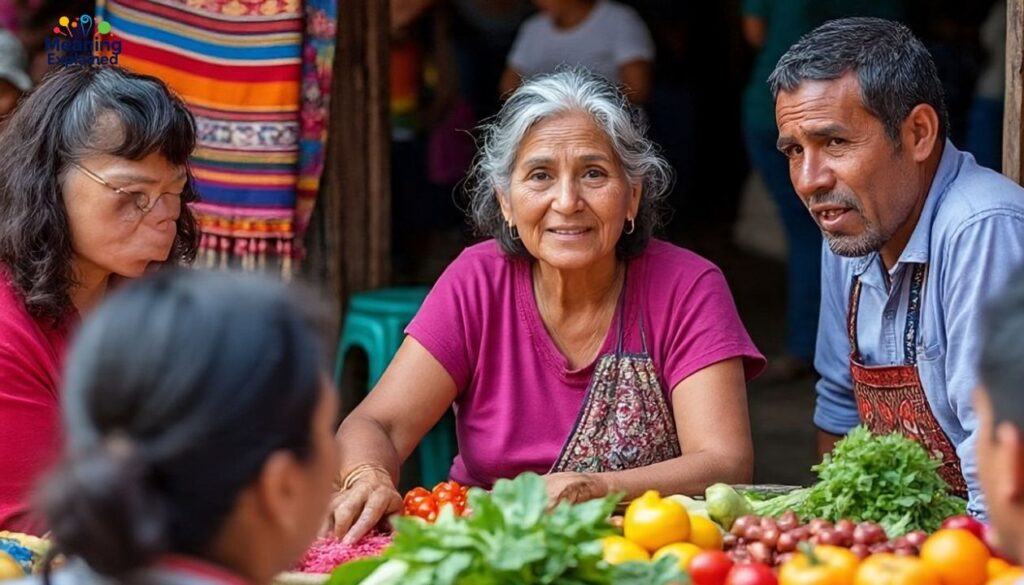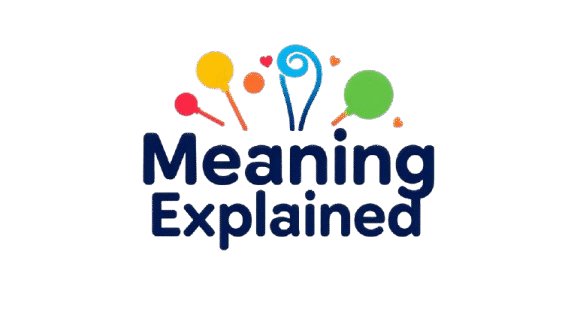Chisme is a Spanish word that means much more than just gossip. While many people think it’s just idle talk, chisme actually plays a big role in Latino communities. It helps people stay connected and share important news with each other.
In English-speaking cultures, gossip often has a bad reputation. People see it as spreading rumors or saying mean things about others. But chisme is different in Spanish-speaking communities. It serves as a way to build relationships and keep families close.
This article will help you understand what chisme really means. We’ll explore how it works in different cultures and why it matters so much. You’ll learn that chisme is actually an important part of community life in many Latino families.
Defining Chisme
At its fundamental level, chisme encompasses the Spanish concept of sharing information, stories, and personal details about individuals, events, or situations within a community. The word itself derives from classical Spanish, where it originally signified casual conversation or informal discussion about others’ affairs.
However, reducing chisme to simple “gossip” misses its profound cultural dimensions. While English “gossip” often implies malicious intent, idle speculation, or harmful rumor-spreading, chisme operates within different cultural parameters that emphasize community connection, information sharing, and social cohesion.
The practice involves the deliberate exchange of personal information, community updates, family news, and social developments through informal networks. This information flow serves multiple purposes: keeping community members informed, maintaining social connections, preserving cultural narratives, and strengthening collective identity.
Cultural Significance of Chisme
The cultural importance of chisme extends far beyond casual conversation, representing a sophisticated system of community communication that has evolved over centuries to serve multiple vital functions within Hispanic societies.
In many Latin American cultures, chisme operates as an unofficial news network, ensuring that important community information reaches all members regardless of their formal education, technological access, or social status. This democratic information sharing helps maintain community cohesion and ensures no one remains isolated from important developments.
The practice also serves as a form of social regulation, helping communities maintain shared values and behavioral expectations. Through chisme, community members learn about social norms, understand consequences of various actions, and receive guidance about appropriate behavior within their cultural context.
A Tool for Connection

In the context of human relationships, chisme serves as one of the most effective tools for building and maintaining social connections within Hispanic communities. This practice creates opportunities for meaningful interaction that might otherwise be difficult to achieve in formal settings.
Through chisme exchanges, community members develop deeper understanding of each other’s lives, challenges, celebrations, and experiences. This shared knowledge creates empathy, mutual support, and stronger interpersonal bonds that strengthen the entire community fabric.
The practice particularly benefits individuals who might otherwise feel isolated or disconnected from their community. Elderly members, stay-at-home parents, recent immigrants, and others with limited social opportunities find chisme provides vital human connection and community integration.
Preservation of Oral Traditions
One of chisme’s most culturally significant functions involves preserving and transmitting oral traditions that might otherwise disappear in rapidly modernizing societies. Through informal storytelling embedded within chisme conversations, communities maintain connection to their historical roots and cultural identity.
Family histories, local legends, traditional practices, and cultural wisdom pass through chisme networks from older to younger generations. This organic transmission process ensures cultural continuity even when formal educational systems may not adequately preserve traditional knowledge.
The storytelling aspect of chisme often includes moral lessons, cultural values, and practical wisdom that help community members navigate life challenges while maintaining connection to their heritage. These stories provide context for understanding current situations through the lens of cultural tradition.
Empowerment and Solidarity
For many marginalized groups within Hispanic communities, particularly women and other individuals with limited formal power, chisme provides crucial opportunities for voice, agency, and mutual support that might not exist through official channels.
Women, especially, have historically used chisme networks to share important information about health, family matters, community resources, and potential dangers or opportunities. These informal communication channels provide space for discussing topics that might be difficult to address in mixed-gender or formal settings.
The practice also enables community members to provide mutual support during difficult times, sharing resources, offering assistance, and coordinating help for those facing challenges. This informal support network often proves more responsive and culturally appropriate than formal social services.
Linguistic Variations and Usage
The rich linguistic diversity of Spanish-speaking regions has produced numerous variations and synonyms for chisme, each reflecting local cultural nuances and linguistic evolution while maintaining the core concept’s essential meaning and function.
These regional variations demonstrate how universal human needs for information sharing and community connection manifest through different linguistic expressions while serving similar social functions across diverse Hispanic cultures.
Understanding these variations helps appreciate the widespread nature of chisme as a social practice and its adaptation to different cultural contexts, geographical regions, and historical influences that have shaped various Hispanic communities worldwide.
Regional Synonyms
Spanish-speaking regions have developed unique terms that capture local variations of the chisme concept while maintaining its essential cultural functions and social significance.
In Spain, “cotilleo” represents the Iberian approach to information sharing, often carrying slightly different cultural connotations than Latin American versions while serving similar community functions within Spanish social contexts.
Puerto Rican communities use “bochinche” to describe their version of community information sharing, reflecting the island’s unique cultural blend of Spanish, African, and indigenous influences that shape social communication patterns.
Grammatical Forms
The Spanish language’s grammatical flexibility allows chisme to function in multiple linguistic roles, providing speakers with nuanced ways to express different aspects of information sharing and community communication.
As a noun, “el chisme” refers to the information itself, the story being shared, or the act of information exchange. This form allows speakers to discuss chisme as a concrete phenomenon with specific content and cultural significance.
The verb form “chismear” describes the action of engaging in information sharing, allowing speakers to discuss the practice as an active behavior with social implications and cultural meaning.
Contextual Applications of Chisme
The versatility of chisme as a social practice allows it to function effectively across diverse settings and situations, adapting to different social contexts while maintaining its core functions of information sharing and community building.
Understanding these various applications helps appreciate chisme’s flexibility and cultural significance while recognizing how it operates within different social environments and serves diverse community needs.
Informal Settings
In casual environments such as family gatherings, neighborhood conversations, and social visits, chisme serves as entertainment, education, and social bonding, creating opportunities for meaningful connection and community building.
Family dinners provide natural settings for chisme exchange, where relatives share updates about extended family members, community events, and personal experiences. These conversations help maintain family connections across geographical distances and generational differences.
Professional Environments
While chisme is primarily associated with informal settings, it also operates within workplace contexts where it influences team dynamics, organizational culture, and professional relationships in ways that can be both beneficial and challenging.
Workplace chisme can help employees stay informed about organizational changes, office politics, and professional opportunities while building relationships with colleagues and creating informal support networks within professional settings.
However, professional chisme requires careful navigation to avoid ethical problems, maintain professional boundaries, and ensure that information sharing serves constructive purposes rather than creating workplace conflict or damaging professional relationships.
Media and Popular Culture

Modern media platforms have expanded chisme’s reach and influence, creating new venues for information sharing while raising questions about privacy, accuracy, and cultural authenticity in digital communication environments.
Celebrity chisme represents a commercialized version of traditional community information sharing, where public figures’ personal lives become subjects of widespread discussion and speculation across various media platforms and social networks.
Social media platforms enable chisme networks to operate across geographical boundaries, allowing community members to maintain connections and share information despite physical separation while creating new challenges for information accuracy and cultural authenticity.
Ethical Considerations
While chisme serves important cultural functions, it also raises significant ethical questions about privacy, accuracy, and potential harm that require careful consideration and cultural sensitivity from participants and observers.
The balance between community connection and individual privacy presents ongoing challenges, particularly as traditional boundaries between public and private information evolve in modern, interconnected societies with diverse cultural expectations.
Ensuring information accuracy becomes crucial when chisme networks spread unverified or false information that could damage reputations, relationships, or community trust while undermining the practice’s positive social functions.
Conclusion
Chisme represents far more than simple gossip or idle conversation, embodying a sophisticated cultural practice that serves vital functions within Hispanic communities worldwide. Through information sharing, social bonding, and cultural transmission, chisme helps maintain community connections, preserve traditions, and support individual and collective well-being.
Understanding chisme’s cultural significance requires appreciation for its complex roles in community building, tradition preservation, and social support while recognizing the ethical considerations that accompany any form of information sharing and interpersonal communication.

